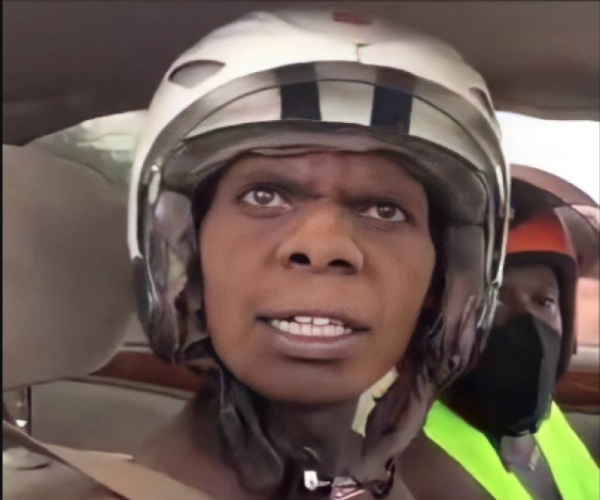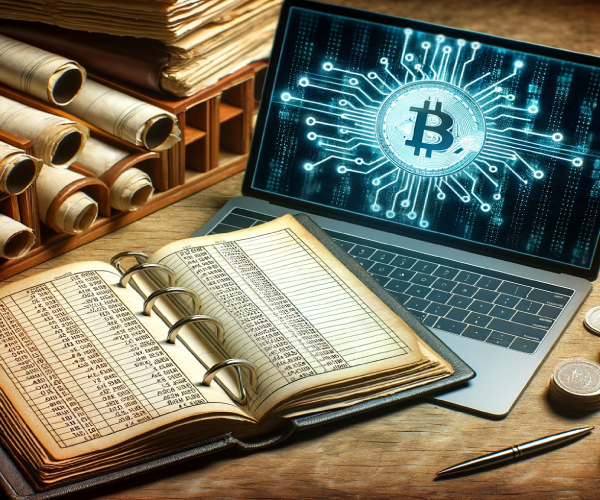Blockchain in Plain Language
 Abiodun Sabitu
Abiodun Sabitu
The first time I stumbled on the term blockchain was around 2012 while I was surfing the internet. Winter was coming, and I had just completed my undergraduate studies that year. For some funny reasons, I had assumed both blockchain and bitcoin were the same. I really did not give it a serious thought until 2017 - a boom year for Bitcoin and centralized exchange platforms like Blockhain.com and Coinbase.com.
Because of the buzz and magic wand the technology waded, I had wanted to learn more about what it was, what it does, how it functions, what it looks like, and any information that I could find out about it. I quickly jumped on Google for a jollof research. The first few hits that were returned by Google luxuriously described blockchain with a range of carefully chosen technical jargon and terminologies. I couldn't even relate or reconcile with them. I bailed so early, I didn’t want to fry my brain.

Present Day
Fast Forward to recent times, these technical jargon and terminologies are still very much around enjoying the airtime, partying all over the place, and giving you the frenzy that makes you want to bail like I did some years ago. Today, if you are like I was then, or possibly can’t pick a polka from the colorful technical dots and luxurious descriptions of blockchain all over Tim Berners-Lee’s web, It is okay and it's not the end of the world. I can assure you that by the end of this article, you will no longer need your helmet. Lol
While attempting to simplify the description of blockchain, multiple sources have described it as a ledger. Extensively, a public ledger, shared ledger, or decentralized ledger. Other times, the most commonly used term to describe it is distributed ledger technology (DLT). So what type of ledger would you name yours? - just kidding. Some other sources have also described it as a form of database that is immutable while a few others feel it is an online record of all transactions that take place in a network.
Let's Turn up the Bass
To turn up the volume of the bass, the Ec-council which is one of the globally recognized bodies offering blockchain education, described it as a distributed ledger of data in which information is replicated across multiple nodes. Each “block” is a time-stamped, unchangeable data record managed by a cluster of computers and not owned by a single entity. These blocks of data are secured and bound to one another—the “chain”—using cryptography. Oh I get it. Let's slow down a bit…. I recognize that feeling, I have been there too, do not fret, the next few paragraphs will light up the tunnel.
The problem I have with some of these descriptions is that they are mirror descriptions. They are either part of a whole or a whole with loads of technical jargon that makes the journey to understanding blockchain for many look like a walk through the Sahara desert. However, on this brighter side of Cannan, it is milk and honey lol.
To have a clear grasp of what a blockchain is, I would quickly derobe some of the royal jargon common in all of these descriptions. Chiefly amongst these are Ledger and Distributed Ledger Technology (DLT). Other notable elders on this table are:
Transactions
Nodes
Network
Consensus Mechanisms
P2P
Block
Chain
Cryptography

Ledger
What easily comes to mind when you hear the word Ledger would most likely be related to keeping financial records. Especially as one of the most talked about aspects of blockchain is cryptocurrency and finance. ledgers are traditionally associated with financial record-keeping.
On the contrary, the ledger being referred to here, most especially in the description of the fundamental fibers of blockchain belongs to the computing register. Although it shares a similar record-keeping purpose with what applies to financial accounting, a ledger is not limited to financial transactions. Instead, it's a system for maintaining a chronological and organized collection of transactions, which can include various activities and operations on data in computing
Distributed Ledger Technology
If you take a boat trip from the financial world to the computing world you will notice that there are many types of ledgers. Lol. Ranging from general financial ledgers to digital ledgers and down to distributed ledgers. A distributed ledger is a type of record-keeping system that is duplicated and transmitted across different nodes (computer devices or servers) forming some sort of network. Each of these participating computers (nodes) on the network has a copy of the ledger as well as real-time transactions in the ledger.
The nodes continuously synchronize data. When a new transaction or entry is made and approved via a Consensus Mechanism(set of rules for agreeing to the validity of a data set), it is then propagated across the network, and each node updates its copy of the ledger. Distributed ledgers often use a P2P (peer-to-peer) mode of communication where nodes connect directly with each other rather than through a central server. This P2P structure is a key aspect of how the network operates and maintains its distributed nature, transparency, decentralization, and tamper-proofness.
In context, there are many things to say about DLT (Distributed Ledger Technology), but as the popular proverb goes, he who fights and runs away, lives to fight another day. lol. I will save it for a future date. Our destination today is the blockchain, you had better alighted from the boat trip so I can show you around blockchain.

Blockchain
Again, just as there are different types of ledgers, there are different architectures and designs of Distributed Ledger Technology. There is a special type that organizes transactions into blocks (collection of data), and chains (linkage of blocks using cryptographic hashes or simply put - unique digital footprints). You're probably nodding now, right? Lol.
Yeah… A blockchain is a type of Distributed Ledger Technology that chronologically organizes transactions into a collection of data called blocks. It chains (links) these blocks together with some form of secure and unique digital footprints called ( cryptographic hashes) across a network of computer devices. Instead of storing this chain of blocks on a single computer or server, it's duplicated across a vast network of computers around the world.
This means no single person or organization has control over it. Every time a new block is added to the chain, every computer on the network updates its copy of the blockchain. This widespread sharing and updating make it incredibly hard for anyone to meddle with the information, ensuring that the records are transparent, trustworthy, and, importantly, very secure. This simpler description adds hues to the varying descriptions you saw earlier. I mean that the Ec-councils description will make greater meaning if you revisit it now.
The blockchain is an exciting and emerging technology that comes with an Airbus loaded with benefits and opportunities. Many businesses and industries are coming to the reality that cryptocurrency constitutes just a tip of its potential. The future of blockchain will birth disruptive business deals, new job roles, and convergences with other emerging technologies.
Conclusion
It's important to remember that understanding blockchain doesn’t require you to be an experts in cryptography or distributed systems. What’s necessary is an openness to learn, a willingness to question, and a curiosity to explore how this technology might influence our world.
In my next series of articles, I will take you to explore the many types of blockchains and use cases that they can be applied to. Thank you for walking with me through this article. May your path in the world of blockchain be as enlightening and transformative as the technology itself.
Subscribe to my newsletter
Read articles from Abiodun Sabitu directly inside your inbox. Subscribe to the newsletter, and don't miss out.
Written by

Abiodun Sabitu
Abiodun Sabitu
Hi, I am a passionate Frontend Engineer with an MBA in Fintech and Blockchain from Nexford University. I am a believer in emerging technologies and I am committed to educating and empowering others about the exciting world of blockchain and its ecosystem.